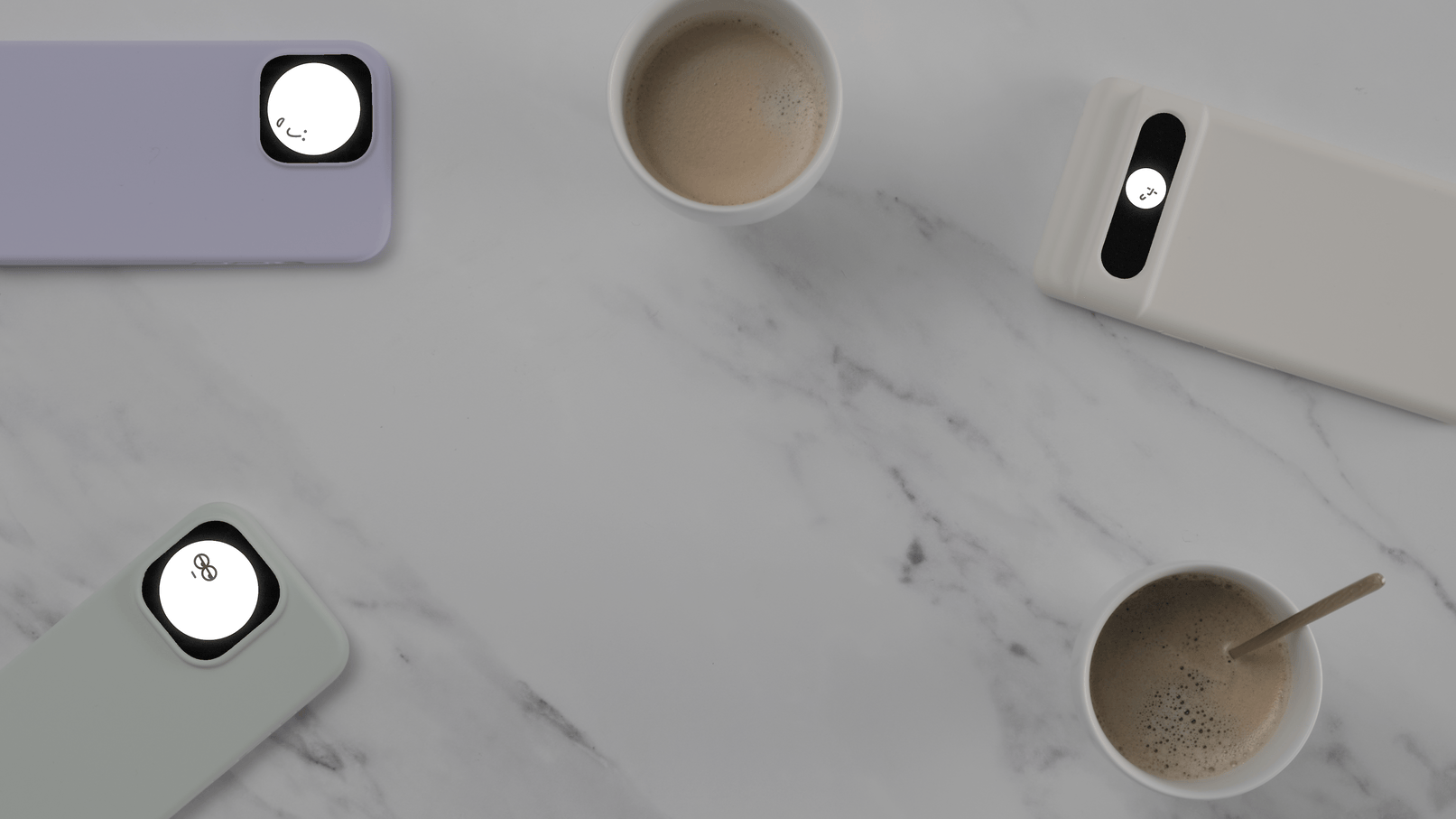Client
Special Projects
Year
2025
Problem
Finding a balance with technology
Solution
An intelligent interface that minimises distractions, activated by the simple act of flipping your phone case.
Keywords
Calm Technology, Digital Wellbeing, Mindful Technology, Calm UI, Positive Friction, UX, Behavioural Design
Press
Aperture
We’re gathering feedback! Tell us how you’d use Aperture at www.focuswithaperture.com
As an innovation studio we've always been drawn to the intersection of physical and digital experiences, with an aim to make the digital world more tangible and accessible through human-centered design
While much of our client work in this space remains confidential, our public projects in digital wellbeing, such as Envelope and Paper Phone for Google, explored how to distill phones down to their essential functions. Our early work with Samsung used tangible objects to help older adults navigate unfamiliar digital devices.
We are fascinated by existing approaches to reducing technology use. While traditional methods like using a second, simpler phone remain powerful, there's an emerging wave of technology that adapts to your context—providing just the right information at the right moment without overwhelming you.
While companies race to create new and amazing devices, Aperture takes a different approach guided by our design philosophy by reimagining something we already use every day—the phone case. Rather than asking you to adopt new technology, it transforms an existing accessory into a thoughtful interface for digital wellbeing.
Aperture emerged from playful experimentation with a phone and case. By reversing the phone so that only a small section of the screen is visible, you create a mini “window” into your phone's interface. However, flipping the phone in and out of the case is surprisingly difficult due to friction, which oddly becomes its strength—it discourages constant access and encourages more mindful technology use.

Why buy a dumbphone when your smartphone can be more intelligent about what it shares?
Mark Wilson, Fast Company
With only a small portion of the screen accessible, Aperture creates an intelligent interface that distills your favourite apps down to their core: minimalist versions of your camera, music player, or messaging. Taking inspiration from smartwatch apps, these provide only the essentials—helping you focus on what truly matters in the moment.


To decide which apps appear, you simply tell your phone what you need: "Can I have directions to Brick Lane highlighting record shops on the way, let me play music, and only allow calls from Alba and Pearl." This approach leverages two emerging trends: generative UI—where interfaces are dynamically created based on user needs—and AI-driven minimalism, which removes digital noise using artificial intelligence.


Flip your phone while reading a messy, ad-filled recipe or distracting website, and Aperture automatically switches to a simpler "reader mode" or AI-generated summary, helping you focus. The interface intelligently reformats content, shifting from distraction-filled pages to clean, step-by-step experiences that preserve only what's relevant. And if you catch yourself doomscrolling, simply flip your phone and Aperture can display a timer for focused work.


Aperture becomes particularly interesting in social settings. When multiple people flip their cases during dinner, their devices recognise each other, creating playful interactions before eventually switching off—a gentle encouragement to stay present.

While our imagined product uses a standard phone case, the flexible design means the interface dynamically adapts to whatever shape window is available, making it compatible with various phone models and case designs.

Something magical happens when you combine two ordinary objects and create something greater than the sum of its parts - a core principle at Special Projects.
We believe the future of design and AI might not lie in creating more things, but in revealing new possibilities in the things we already have.
By questioning our assumptions about everyday objects, we might find that the next big innovation is already sitting on our desk, waiting to be seen in a new light.


Aperture began as an experimental concept, but it’s now moving toward reality. If Aperture excites you, we’d love to hear your thoughts. How would you use it? What kinds of digital experiences would you want it to shape?
Visit focuswithaperture.com to share your thoughts and express interest.
1. We were big fans of Durrell Bishop and Tom Hulbert’s Birdbox in 2010. By placing the phone inside the box, it transforms into a nesting cuckoo alarm clock that gently awakens you with the sight and sounds of birds.
2. Apple has a patent for its smart cover from 2010 which has a “peek mode” allowing different content to be peeked at on the screen when a portion of the cover is lifted off. Evernote made use of this feature in their Evernote Peek app in 2011. [ 1 ], [ 2 ], [ 3 ]
3. The Rabbit R1’s generative UI lets the user describe how they want their interface to look by speaking into the device. [ 1 ], [ 2 ], [ 3 ]
4. Samsung’s Smart View Wallet Case is probably the closest product out there to Aperture. When the user flips their case closed, a small portion of the UI is visible through the window.
5. NNGroup’s article on Generative UI offers an examination of how adaptive interfaces can streamline user interactions by dynamically tailoring content to individual needs, reducing cognitive overload.
6. Brick is an NFC tag which enables or disables a calmer mode on your device, forcing you to get up and move to a specific location to change the interface.
7. The TinyPod transforms an Apple Watch into what looks like a minimal iphone using a specially designed case.
8. Brain.ai’s ‘anti-app’ environment seeks focus through natural language building emergent interfaces stemming from user behaviour, habits, and intentions.
9. Apple’s Shortcuts app enables the ability to automate common and desired paths on your phone, unique to you.
10. Paper Phone, a previous project of ours from 2019, is an experimental app which helps you have a little break away from your digital world by printing a personal booklet of the information you’ll need that day.
11. Envelope, also a previous project of ours lets you distill your phone into its most basic functionalities by covering your phone with a temporary case.









